![]()
![]()
![]()
Use LEFT and RIGHT arrow keys to navigate between flashcards;
Use UP and DOWN arrow keys to flip the card;
H to show hint;
A reads text to speech;
20 Cards in this Set
- Front
- Back

|
Name: Brutus
Place: Rome Date: 4th century BC Significance: looks like an everyday person (not idealized) |
|
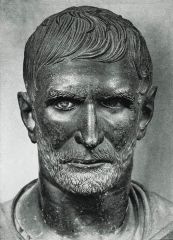
|
Name: Brutus
Place: Rome Date: 4th century BC Significance: looks like an everyday person (not idealized) |
|
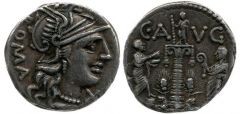
|
Name: C. Minucius Augurinus
Place: Rome Date: 135 BC Significance: advertised reputations and achievements of families instead of being neutral |
|

|
Name: Esquiline Tomb
Place: Rome Date: 3rd Century BC Significance: shows historical scenes from Samnite Wars |
|
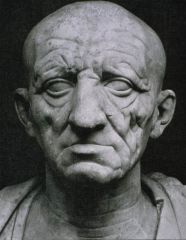
|
Name: Head of a Roman, Otricoli
Place: Otricoli Date: 1st Century BC Significance: veristic style (real) as opposed to idealized |
|
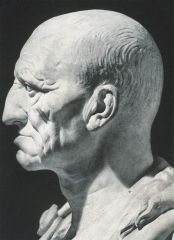
|
Name: Head of a Roman, Otricoli
Place: Otricoli Date: 1st Century BC Significance: veristic style (real) as opposed to idealized |
|
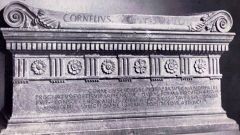
|
Name: Sarcophagus of Lucius Cornelius Scipio Barbatus
Place: Rome Date: early 3rd Century BC Significance: when alive, he led Roman army to victory over Etruscans |
|

|
Name: Servian Wall
Place: Rome Date: after 396 BC Significance: used to repel invaders in 2nd Punic War |
|
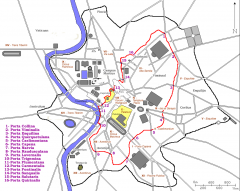
|
Name: Servian Wall
Place: Rome Date: after 396 BC Significance: used to repel invaders in 2nd Punic War |
|
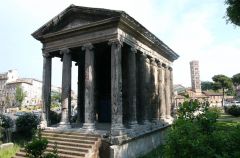
|
Name: Temple of Portunus
Place: Rome Date: 75 BC Significance: combination of Greek and Etruscan architecture, used to illustrate treatises of classical architecture |
|
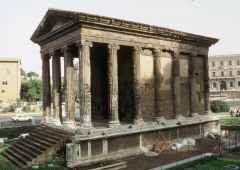
|
Name: Temple of Portunus
Place: Rome Date: 75 BC Significance: combination of Greek and Etruscan architecture, used to illustrate treatises of classical architecture |
|
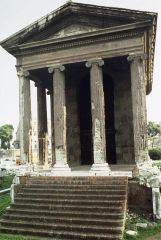
|
Name: Temple of Portunus
Place: Rome Date: 75 BC Significance: combination of Greek and Etruscan architecture, used to illustrate treatises of classical architecture |
|
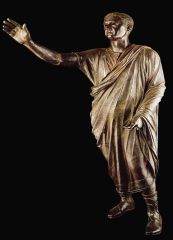
|
Name: the Arringatore
Place: Cortona Date: 90 – 70 BC Significance: Etruscan inscriptions, even though he is likely in the Roman elite |
|
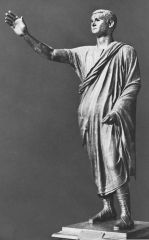
|
Name: the Arringatore
Place: Cortona Date: 90 – 70 BC Significance: Etruscan inscriptions, even though he is likely in the Roman elite |
|

|
Name: the Arringatore
Place: Cortona Date: 90 – 70 BC Significance: Etruscan inscriptions, even though he is likely in the Roman elite |
|
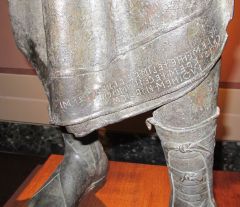
|
Name: the Arringatore
Place: Cortona Date: 90 – 70 BC Significance: Etruscan inscriptions, even though he is likely in the Roman elite |
|
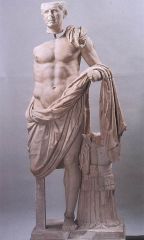
|
Name: Tivoli General
Place: Tivoli Date: 75 – 50 BC Significance: idealized body, like Greek sculptures |
|
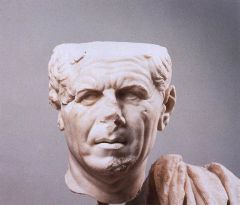
|
Name: Tivoli General
Place: Tivoli Date: 75 – 50 BC Significance: idealized body, like Greek sculptures |
|
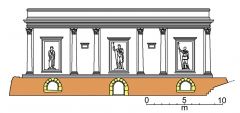
|
Name: the Tomb of the Scipios
Place: Rome Date: early 3rd Century BC Significance: Etruscan style, like Tomb of Shields and the Chairs, but used for Romans |
|
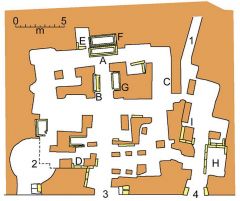
|
Name: the Tomb of the Scipios
Place: Rome Date: early 3rd Century BC Significance: Etruscan style, like Tomb of Shields and the Chairs, but used for Romans |

